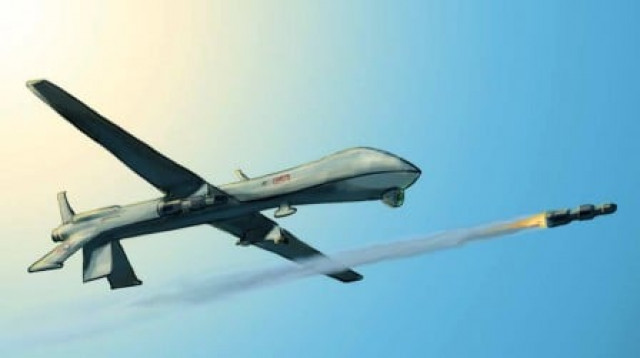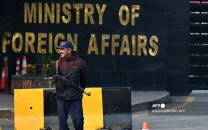Drones deal close at hand
The Pakistan Army is inching closer to realising its dream of owning Predator drones.

Drones deal close at hand
General Atomics Aeronautical Systems (GAAS) Inc., the US-based company that manufactures Predators, informed The Express Tribune via email that it has the approval for an ‘export-approved version’ of the aircraft, which it now plans to sell for the first time to countries outside the US, Nato countries, Japan, Australia and New Zealand.
Earlier, the company’s president Frank Pace was quoted in the press as saying that “General Atomics see the potential for sales of as many as 100 units in the Middle East and Pakistan of the so-called Predator XP model approved for export.” The Middle East countries include Saudi Arabia, Egypt and the United Arab Emirates.
This statement was made at the recently held Farnborough Air Show near London, where a delegation of the Pakistan armed forces was also present to display their two JF-17 Thunder aircraft.
When asked to elaborate on the above statement, a GAAS spokesperson Kimberly A Kasitz said: “It is true that various Middle Eastern countries have expressed interest in an export-approved version of Predator A and that we have received licences to begin discussions with several of these countries about a potential sale.”
Kasitz added that the company has applied for a licence with the US State Department to begin negotiations for such a sale with Pakistan also. But she clarified that it was still pending and as of now “we have not yet received a licence.”
Local drone manufacturers in Pakistan, who wish to stay anonymous, insist that the development is significant. “The admission of seeking a licence only goes to show that our armed forces have sent their specifications to the company,” says one insider, who has sold his UAVs to many foreign countries, including the US.
“When one applies for a licence from the State Department, it’s not just a request asking for permission to talk to a certain customer. Companies only seek a licence when they get a complete list of their customer’s requirements.” He says that it is only a matter of time before Pakistan will be spending millions of dollars on the product.
However, another industry insider from Islamabad says the “GAAS was pursuing this with the US government for more than a year now and seems like they may have been given the nod. However, the first buyers are likely to be the UAE and Saudi Arabia. Pakistan’s turn will come much later.”
Elaborating, he says there are many concerns over giving such a sophisticated product to Pakistan, including the fear that it may be used on the border with India. “They are also worried about the possibility that cheap Chinese copycats would be made in case Beijing gained access to the product.”
He informed that another drone, the Boeing’s Scan Eagle, was also being considered by our forces.
Experts argue that the GAAS’s Predator A or Predator XP type product being offered by GAAS is a “stripped down” drone which is unarmed and capable of reconnaissance missions only. Also, they point out that the Predator requires satellite feed to operate in order to truly utilise its capabilities. “One can operate a Predator-type drone even without a satellite using ground control stations only. But the problem in that case would be that it would operate only when the UAV is within line of sight. For any operations beyond visual range, which truly is the hallmark of the Predator, would require satellite links,” says an expert, adding that the less said about the state of Pakistani satellites the better.
A senior Pakistan army official backed the claim and said: “The only reason why we still don’t have an armed drone like the Predator is that it requires satellite capability. It’s true that until we cross that hurdle, we won’t be able to realise the full potential of such a high-end product even if we get it.”
The price of a Predator is anywhere between $4 and $15 million. According to an estimate, a 10 aircraft Predator system comprising ground stations and software can carry a price-tag of a staggering $400 million.
Meanwhile, Inter Services Public Relations (ISPR) Director-General Major General Athar Abbas has denied knowledge of any communication with the American company GAAS. He said as of today no “official contact” has been made with the company.
He denied that any meeting between representatives of GAAS and Pakistan armed forces took place at the Farnborough Air Show regarding the Predator drones. “To suggest anything about prospects for Predator-type drones for Pakistan would be speculation,” he added.
Published in The Express Tribune, August 2nd, 2010.



















COMMENTS
Comments are moderated and generally will be posted if they are on-topic and not abusive.
For more information, please see our Comments FAQ